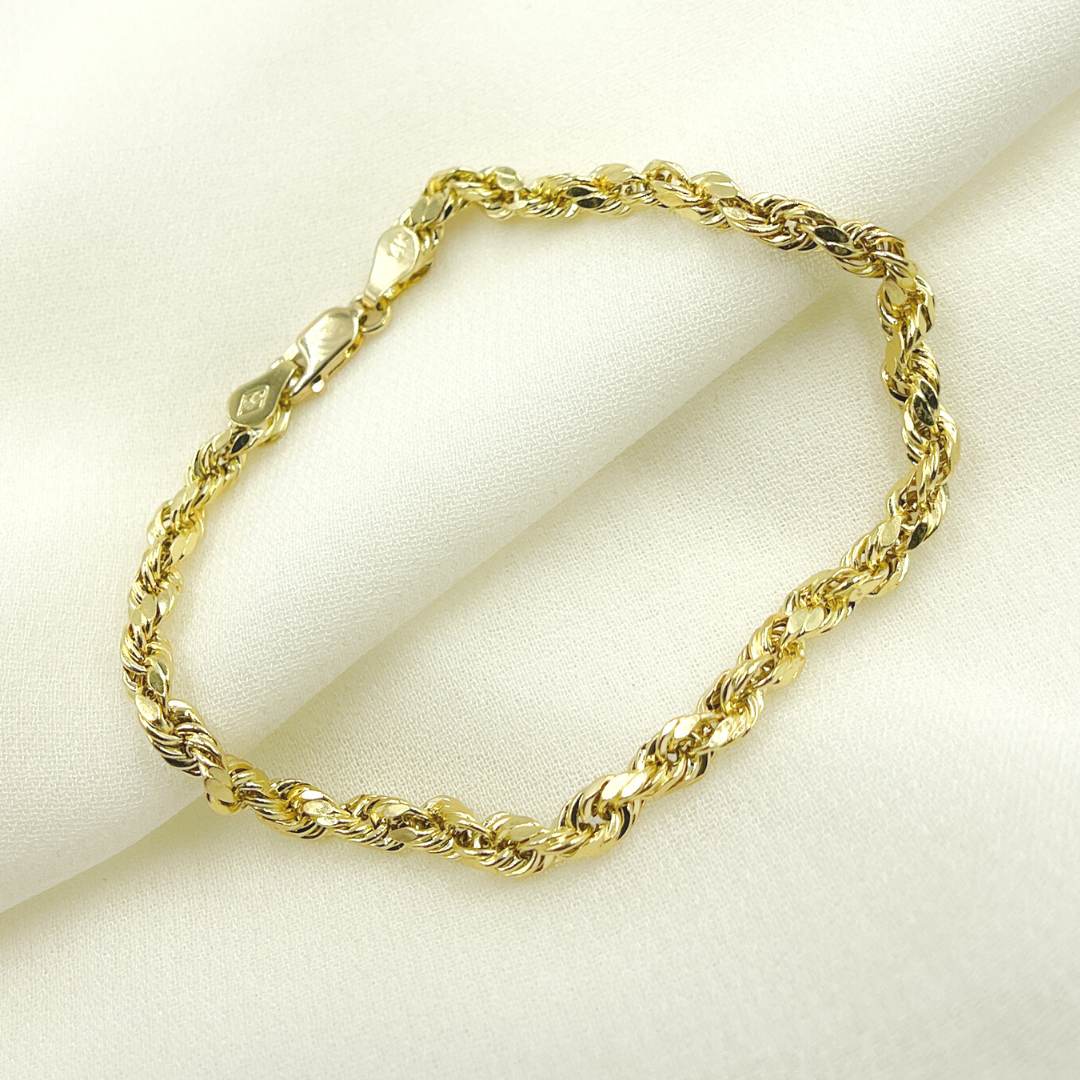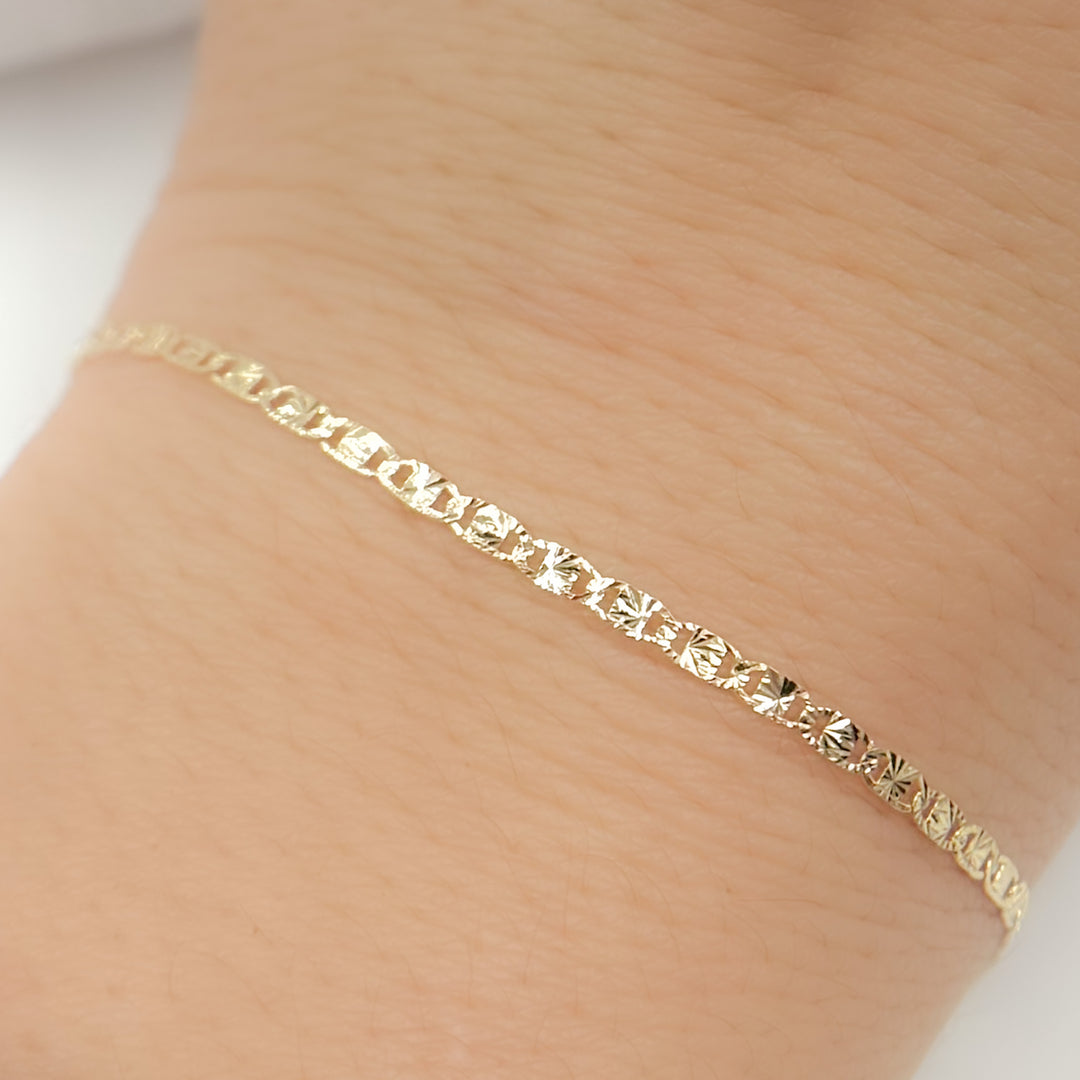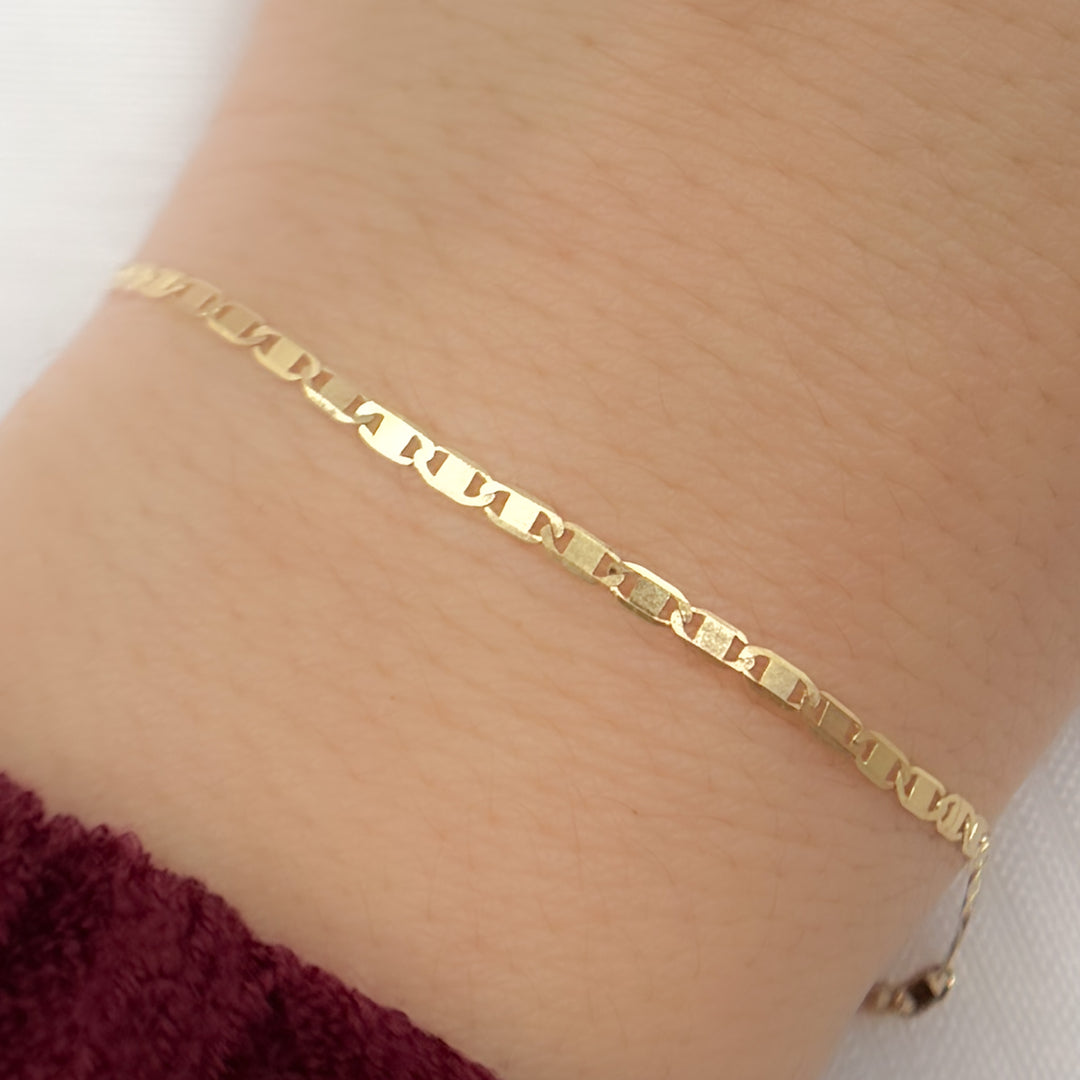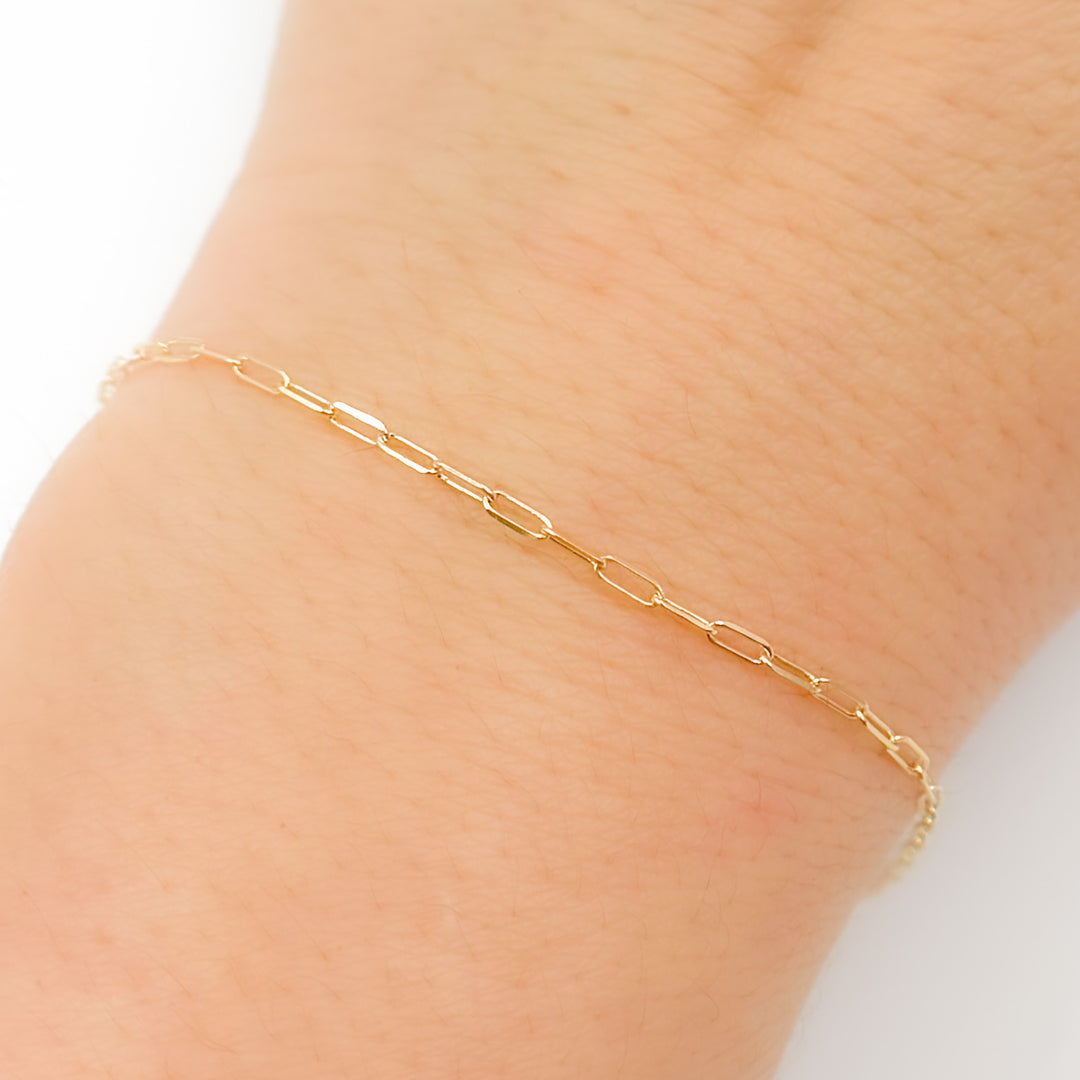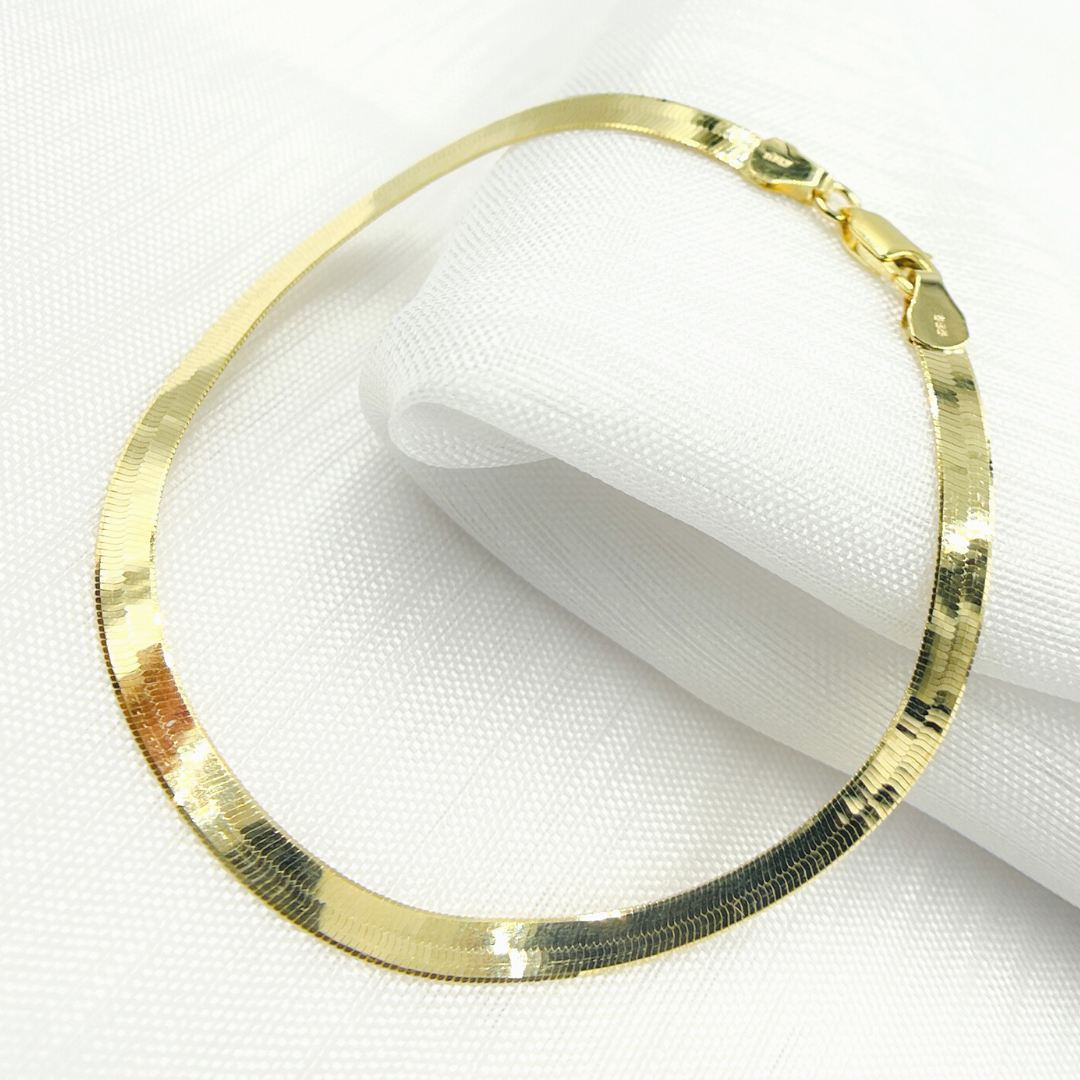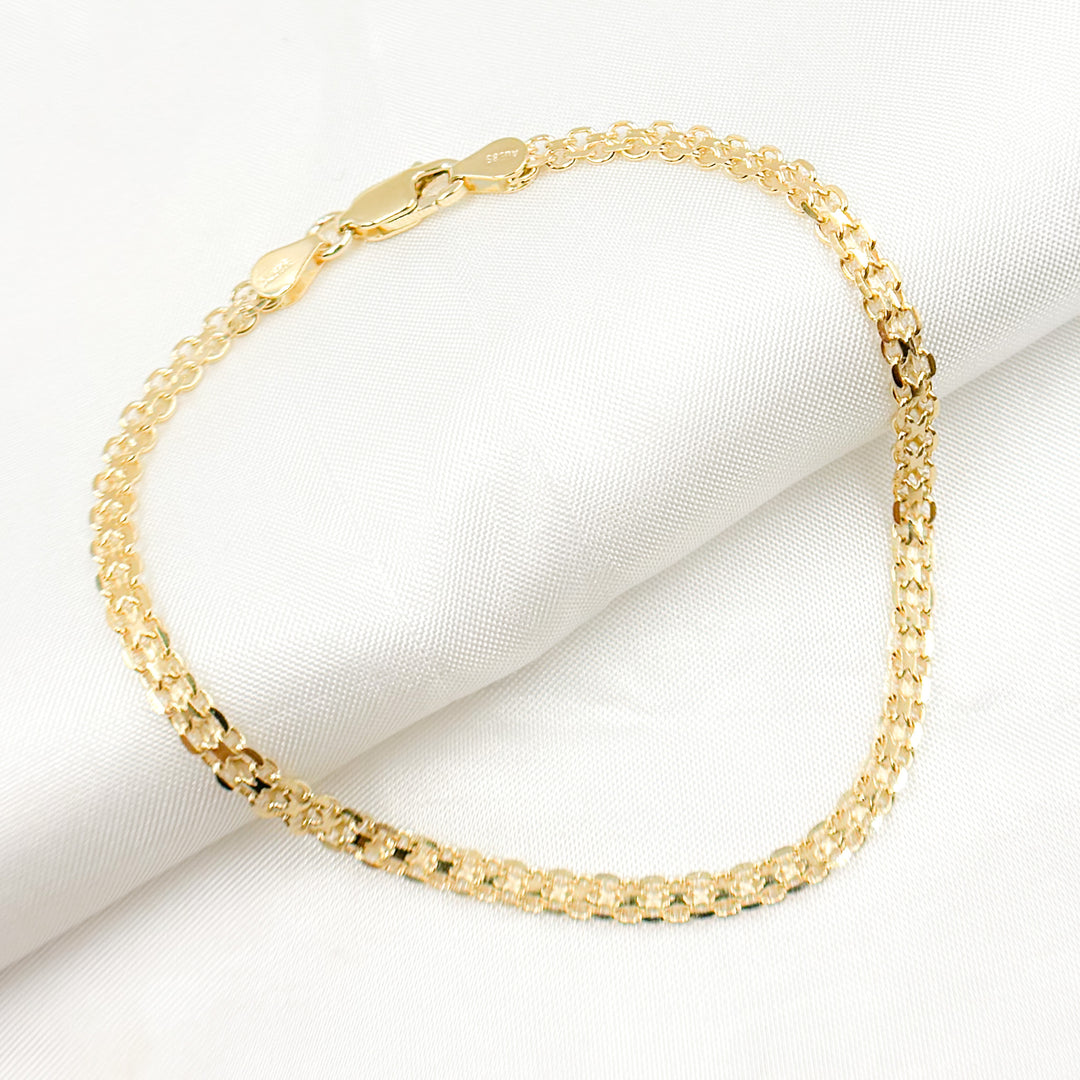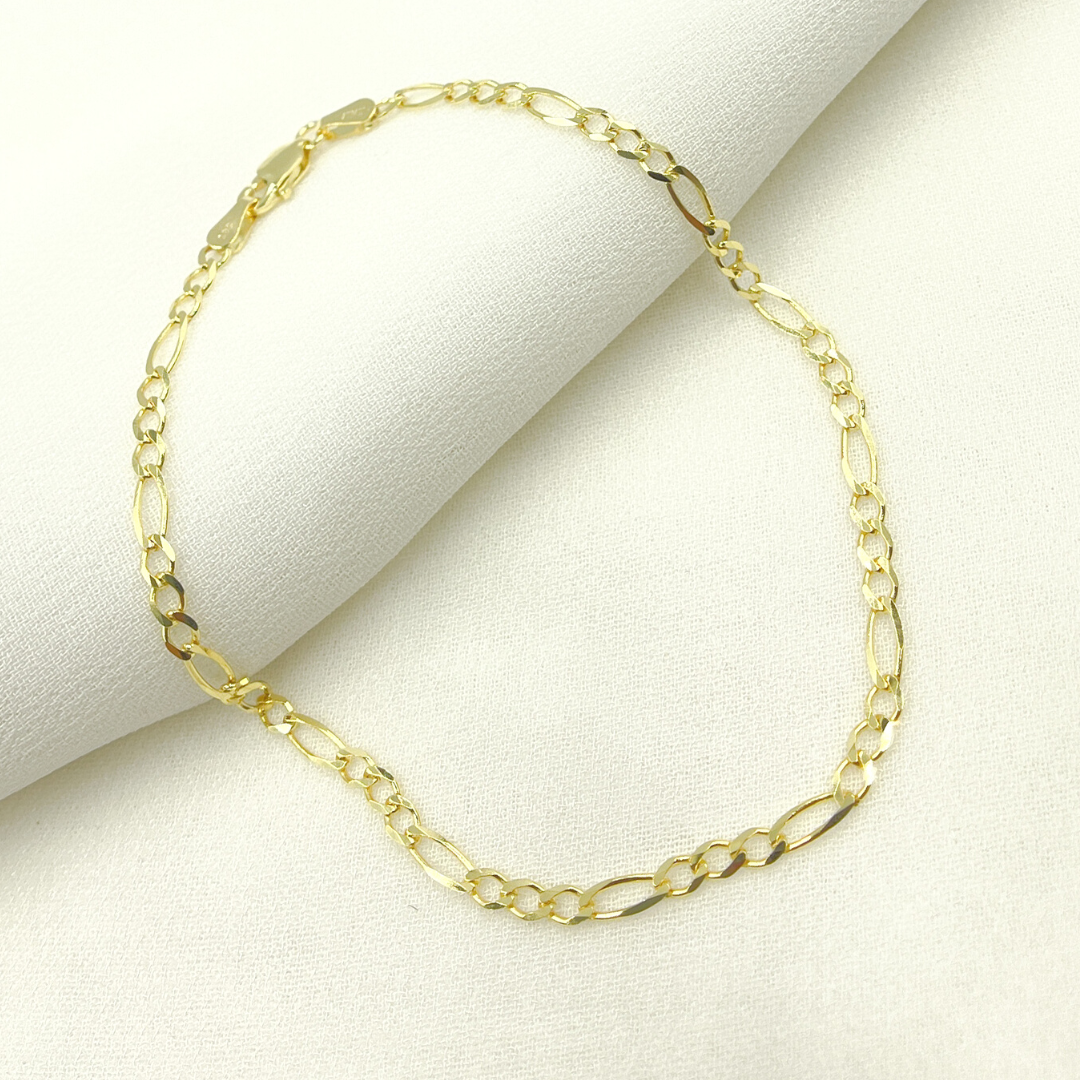14K vs 18K Gold Bangles: A Complete Guide to Choosing the Right Gold for You
Gold bangles have adorned wrists for thousands of years, symbolizing everything from cultural heritage to personal style. Whether you're shopping for your first gold bangle or adding to an existing collection, one of the most important decisions you'll face is choosing between 14K and 18K gold.
The choice you make will not only impact your budget, but it will also impact how your bangles will look, feel, and wear over time. Knowing the differences between these two common gold purities will ensure that you are comfortable in making the right decision that suits your lifestyle, preferences, and needs.
What is Karat Gold? Understanding Gold Purity
Before diving into the comparison, it's essential to understand what "karat" means in the context of gold jewelry. The karat system measures gold purity on a scale of 1 to 24, with 24K representing pure gold.
Pure 24K gold, while beautiful, is too soft for most jewelry applications. It bends easily and shows wear quickly, making it impractical for bangles that need to withstand daily activities. This is why gold jewelry incorporates other metals, called alloys, to increase strength and durability.
14K gold contains 58.5% pure gold mixed with 41.5% alloy metals like copper, silver, nickel, or zinc. 18K gold contains 75% pure gold with 25% alloy metals. This difference in gold content creates distinct characteristics that affect everything from appearance to price.
The specific alloys used may vary between metal manufacturers and affect the final color and properties of gold. The white gold versions of both 14k and 18k use the palladium or nickel that achieve their silver appearance, while Rose Gold incorporates more copper for its specific pink color.
Also Read: 10K vs 14K vs 18K vs 24K Gold Comparison Guide 2025
14K vs 18K Gold Color: What’s the Difference?
One of the most noticeable differences between 14K and 18K gold bangles is their color intensity. 18K gold displays a richer, more vibrant yellow color due to its higher gold content. The increased purity creates that warm, luxurious golden hue that many associate with high-end jewelry.
14K gold, while still beautiful, has a slightly more subdued yellow tone. The additional alloy metals create a paler appearance that some describe as more contemporary or subtle. This difference becomes more apparent when pieces are placed side by side, though both maintain the classic gold appearance that makes bangles so appealing.
The color difference can be influenced by lighting conditions. Under warm indoor lighting, 18K gold tends to glow with that classic golden radiance, while 14K gold appears more muted. In natural daylight, both maintain their distinctive characteristics, though the difference may be less pronounced.
18K typically gives the look they want for those who like a traditional, strong gold appearance. But if you like something more subtle, or if you are going to combine more metals in your jewelry collection, I can see where the 14K gold could appeal to you with its more subdued tone.
Durability of Gold Bangles: 14K vs 18K
When it comes to durability, 14K gold takes the clear advantage. The higher percentage of alloy metals makes 14K gold harder and more resistant to scratches, dents, and general wear. This makes it an excellent choice for bangles that will see regular use.
14K gold bangles can withstand the bumps and scrapes of daily activities better than their 18K counterparts. Whether you're typing at a computer, carrying groceries, or engaging in light exercise, 14K gold maintains its appearance longer with minimal maintenance.
18K gold, being softer due to its higher gold content, is more susceptible to showing wear marks. While this doesn't mean 18K bangles are fragile, they do require more careful handling. They're more prone to developing small scratches and may show signs of wear sooner than 14K pieces.
This durability difference makes 14K gold particularly appealing for those with active lifestyles or jobs that involve manual work. However, it's worth noting that proper care can help any gold bangle maintain its beauty regardless of karat weight.
For bangles intended as pieces of special opportunity or collectible jewelry, which will not see continuous wear, the durability difference in your decision-making process may be less important.
Also Read: 10k vs 14k White Gold: Which Is Better?
Best Gold for Sensitive Skin: 14K or 18K?

Skin sensitivity is an important factor that many buyers overlook when choosing gold bangles. The alloy metals mixed with gold can sometimes cause allergic reactions, and the karat weight affects which metals are present and in what quantities.
18K gold is generally more hypoallergenic than 14K gold because it contains a higher percentage of pure gold and fewer potentially irritating alloy metals. People with sensitive skin or known metal allergies often find 18K gold more comfortable for extended wear.
14K gold, with its higher alloy content, may contain metals like nickel or copper that can cause skin irritation in sensitive individuals. However, many people wear 14K gold without any issues, and reputable manufacturers often use nickel-free alloys to minimize allergic reactions.
If you have a history of metal allergies or particularly sensitive skin, 18K gold may be the safer choice. You might also consider having the inside of 14K bangles polished regularly or choosing pieces with protective coatings if skin sensitivity is a concern.
It's worth noting that both 14K and 18K gold are generally much better tolerated than lower karat gold or gold-plated jewelry, which contain higher percentages of potentially problematic metals.
Also Read: Hypoallergenic 14K Gold Earrings for Sensitive Ears
Price and Value: Investment Considerations
The price difference between 14K and 18K gold bangles reflects the gold content, with 18K typically costing 25-40% more than comparable 14K pieces. This price gap exists because 18K gold contains significantly more precious metal.
From a pure materials perspective, 18K gold has better intrinsic value due to its higher gold content. If you ever decide to sell your bangles, 18K pieces will generally have higher resale value based on their gold content alone.
However, value isn't just about resale potential. 14K gold offers excellent value for everyday wear because of its durability. You're getting jewelry that will maintain its appearance longer with less maintenance, potentially making it more cost-effective over time.
For budget-conscious buyers, 14K gold allows you to enjoy genuine gold jewelry at a more accessible price point. This can be particularly appealing if you're building a collection or want multiple bangles for different occasions.
The price difference also means you might be able to afford a larger or more elaborately designed bangle in 14K gold for the same budget as a smaller, simpler 18K piece.
Comparison Table: 14K vs 18K Gold Bangles
|
Feature |
14K Gold Bangles |
18K Gold Bangles |
|
Gold Content |
58.5% |
75% |
|
Durability |
High – resistant to scratches |
Medium – softer, scratches easier |
|
Color |
Subtle, pale yellow |
Rich, vibrant yellow |
|
Price |
Lower – budget-friendly |
Higher – luxury pricing |
|
Skin Sensitivity |
Moderate (may irritate some) |
Low (more hypoallergenic) |
|
Ideal Use |
Daily wear, active lifestyle |
Special occasions, heirloom use |
Cultural and Style Preferences
Cultural background often influences gold preferences, with different regions and traditions favoring various karat weights. In many South Asian and Middle Eastern cultures, higher karat gold (18K-22K) is preferred for traditional jewelry, including bangles. The richer color is seen as more auspicious and luxurious for special occasions and ceremonial wear.
Western jewelry traditions have historically embraced 14K gold for its practical benefits, especially for pieces intended for regular wear. This cultural difference means that your intended use and cultural context might influence which karat weight feels more appropriate.
For bridal jewelry or heirloom pieces, 18K gold often carries more prestige and is viewed as more traditional in many cultures. The richer color also photographs beautifully, making it popular for wedding jewelry and special occasion pieces.
If your bangles will be part of traditional outfits or cultural ceremonies, consider which karat weight aligns with those traditions. However, personal preference and practical considerations should ultimately guide your decision.
Also Read: Blue Lace Agate Meaning: Spiritual Properties & Benefits
Making Your Decision: Key Factors to Consider
Choosing between 14K and 18K gold bangles comes down to balancing several personal factors:
Choose 14K gold if you:
- Want bangles for daily wear
- Prefer better durability and scratch resistance
- Are working with a tighter budget
- Like a more subtle gold color
- Have an active lifestyle
- Want the best value for everyday jewelry
Choose 18K gold if you:
- Want the richest gold color and appearance
- Are you shopping for special occasion or heirloom pieces
- Have sensitive skin or metal allergies
- Prefer higher intrinsic value and resale potential
- Want traditional, luxurious-looking gold
- The budget allows for the premium price
Remember that there's no universally "better" choice – only what works better for your specific situation. Some jewelry enthusiasts even choose to have both, using 14K bangles for everyday wear and saving 18K pieces for special occasions.
Care and Maintenance Tips
Regardless of which karat weight you choose, proper care will help your gold bangles maintain their beauty:
Store bangles separately to prevent scratching against other jewelry. Use soft cloth pouches or lined jewelry boxes with individual compartments.
Clean your bangles regularly with mild soap and warm water, using a soft brush to remove buildup in crevices or detailed areas. Avoid harsh chemicals or abrasive cleaning methods.
Have your bangles professionally inspected and cleaned annually, especially if you wear them frequently. Professional cleaning can restore shine and identify any potential issues before they become problems.
Final Recommendations
Both 14K and 18K gold bangles offer their own advantages, and your choice should reflect your lifestyle, budget, and personal preferences. 14K gold provides excellent durability and value for everyday wear, while 18K gold offers superior beauty and prestige for special pieces.
Consider starting with the karat weight that best matches your primary intended use, and remember that you can always expand your collection over time. Many jewelry lovers find that owning both types gives them flexibility for different occasions and outfits.
Visit a reputable jeweler to see both options in person, as seeing and feeling the difference can help clarify your preference. Take time to consider how the bangles will fit into your existing wardrobe and jewelry collection.
The choice between 14K and 18K gold bangles ultimately comes down to your individual needs and preferences. Both offer the timeless beauty and lasting value that make gold jewelry such a treasured investment.
Shop 14K Gold Bangles or 18K Gold Bangles Today!
Frequently Asked Questions
Can I wear 18K gold bangles every day?
While you can wear 18K gold daily, it requires more careful handling than 14K gold. 18K is softer and more prone to scratches, so consider your lifestyle and activities.
Do 14K gold bangles tarnish?
14K gold doesn't tarnish in the traditional sense, but it may develop a patina over time due to the alloy metals. Regular cleaning will maintain its appearance.
Which is better for investment: 14K or 18K gold?
18K gold has a higher intrinsic value due to greater gold content, making it better from a pure investment standpoint. However, 14K offers better value for wearable jewelry.
Is 18K gold worth the extra cost?
This depends on your priorities. If you value the richest gold appearance, have sensitive skin, or want maximum prestige, 18K may be worth the premium. For durability and everyday value, 14K often provides better bang for your buck.



